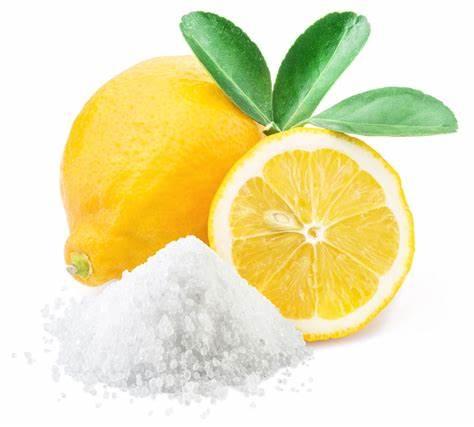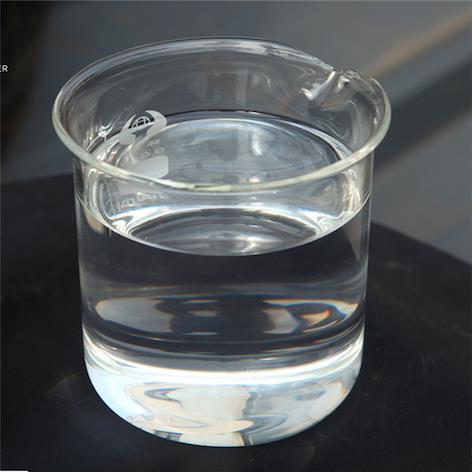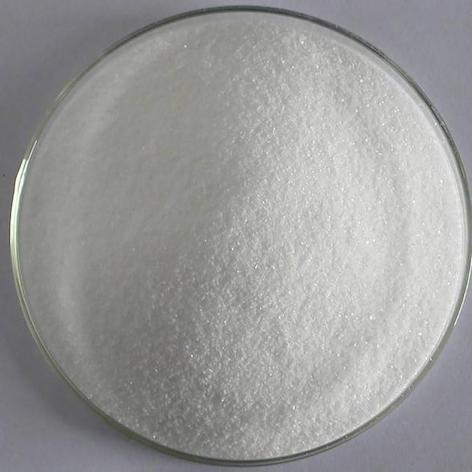Citric acid:General description,Application,and Production
Citric acid is a weak organic acid with the chemical formula C6H8O7. It is a natural preservative and is found in citrus fruits such as lemons, limes, oranges, and grapefruits. It has a sour taste and is commonly used as a food additive to add flavor or acidity to foods and drinks, as well as to prevent spoilage. Citric acid is also used in a variety of other industries, such as pharmaceuticals, cosmetics, and cleaning products. It is soluble in water and is biodegradable, making it an environmentally friendly choice for many applications[1][2].
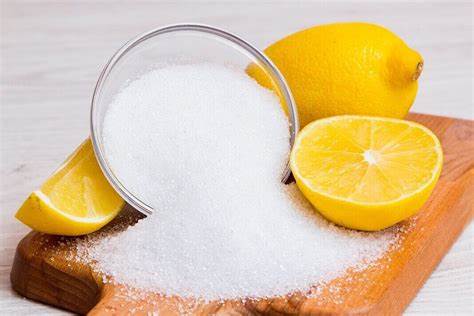
Figure 1. Citric acid is a weak organic acid that occurs naturally in many fruits and vegetables.
Application and Pharmacology
Citric acid (CA) is the most valuable weak organic acid, widely used on the market for many applications [1]. It is a tricarboxylic acid with an essential role for the metabolism of aerobic organisms. Studies about its production dates back many years when it was crystallized from lemon juice (eighteenth century). Furthermore, considering the increase in CA demand, China aimed at production process improvement with an increase of its economic exportation load of about 10%, from 2015 to 2017. In this regard, Figure 2 attributes to China 75% of the whole trade value connected with the CA exportation, followed by the Netherlands, USA and Germany (each one with a contribution around 3%). On the other hand, USA (12%), Germany (8%), Mexico (5%) and India (5%) represents the main importers in the world. Whereas, the Chinese production independence is confirmed by an import trade level lower than 1%. Citric acid occurs naturally in many fruits and vegetables, especially in citrus fruits such as lemons and limes. It has a wide range of applications in food, pharmaceutical, and cosmetic industries due to its unique properties. Here are some of the main applications and pharmacology of citric acid:
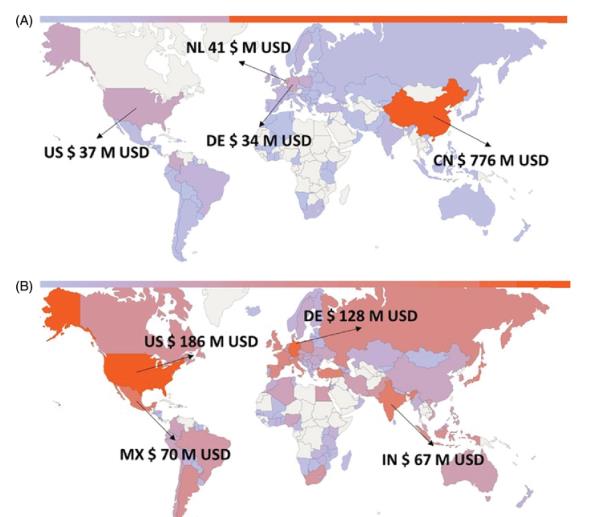
Figure 2 Worldwide economic flows related to citric acid export and import
1. Food industry: Citric acid is widely used in the food industry as a flavor enhancer, preservative, and acidulant. It is used in soft drinks, canned foods, jams, jellies, and other processed foods to give them a tart, acidic taste. It also helps to prevent spoilage by inhibiting the growth of bacteria and fungi.
2. Pharmaceutical industry: Citric acid is used in the pharmaceutical industry to adjust the pH of formulations, as a buffering agent, and as a chelating agent. It is also used as a coating agent for tablets and capsules. For example, Disrupted citric acid metabolism inhibits hair growth:Hair follicles (HFs) play an essential role in sustaining a persistent hair growth cycle. The activities of dermal papilla cells (DPCs) and other cells inside the HFs dominate the process of hair growth. However, the detailed molecular mechanisms remain largely unknown. To investigate the role of citric acid metabolism in hair growth, we evaluated the effect of citrate synthase (CS)– citric acid axis on hair growth in vivo and in vitro. Mice hair growth was evaluated by morphology and histopathology analysis. The inflammation and apoptosis levels in mice, HFs, and DPCs were detected by immunohistofluorescence, qPCR, ELISA, western blot, and TUNEL assay. Cell proliferation, cell cycle, and cell apoptosis in DPCs were analyzed by real- time cell analysis and flow cytometer. We found that subcutaneous injection of citric acid in mice caused significant hair growth suppression, skin lesion, inflammatory response, cell apoptosis, and promotion of catagen entry, compared with the saline control, by activating p- p65 and apoptosis signaling in an NLRP3- dependent manner. In cultured human HFs, citric acid attenuated the hair shaft production and accelerated HF catagen entry by regulating the above- mentioned pathways. Additionally, citric acid hampered the proliferation rate of DPCs via inducing cell apoptosis and cell cycle arrest. Considering that citrate synthase (CS) is responsible for citric acid production and is a rate- limiting enzyme of the tricarboxylic acid cycle, we also investigated the role of CS in citric acid metabolism and hair growth[1].
3. Cosmetics industry: Citric acid is used in the cosmetics industry as an alpha hydroxy acid (AHA) to exfoliate dead skin cells, improve skin texture and tone, and reduce the appearance of fine lines and wrinkles. It is also used as a pH adjuster, preservative, and fragrance ingredient.
4. Pharmacology: Citric acid is metabolized in the body to form bicarbonate, which helps to regulate the acid-base balance in the blood. It also enhances the absorption of minerals such as calcium and iron in the intestine. Citric acid has been studied for its potential therapeutic effects in treating kidney stones, improving urinary tract health, and reducing the risk of osteoporosis.
Synthesis
Citric acid is considered one of the most valuable weak organic acids on the market and its production by biotechnological approaches is a very interesting topic. Despite the related scientific research, the literature still lacks a state of the art for the technological innovation change, necessary for a study of the inventions designed for real scale implementation. In this context, the present review looks to account for more than 100 worldwide patents (1929–2018), necessary for the identification of the innovative markets and the most promising fields for economic investments. An increasing invention number, combined with the current worldwide citric acid export flows, with China as the leader (with an economic contribution of 75%, in 2017). In order to satisfy the requests of the market which has moved toward a circular economy, the possibility to use waste substrates represents one of the main options considered in the recent patents. The discussion highlights the sustainability improvement, achieved by the conversion from a submerged technology to a solid-state fermentation (koji process)[1].
Currently, the CA biotechnological production is mainly located in China and 2 million tonnes of product for year are expected to 2020. The use of this agent includes several fields, including: food, textile, chemical and pharmaceutical industries. Nowadays, the experimental world production of CA mainly involves fungi and yeasts: Aspergillus niger, A. wentii, A. clavatus, Penicillium luteum, P. citrinum, Mucor piriformis, Candida guilliermondii, Saccharomycopsis lipolytica, Trichoderma viride and Arthrobacter parafineus. However, only A. niger and the closely related strain of A. wentii have been chosen for commercial production Overall, the processes include the previous fermentation followed by recovery and purification. The main critical parameters for the fermentation are: the high arbohydrate concentration, the maintenance of high dissolved oxygen, the constant agitation and low pH value. As concern the further recovery and purification steps, the most common approaches are the CaCO3/H2SO4 precipitation and the liquid solvent extraction (by a solvent mixture). Alternatively, Ledakowicz et al. describe an anion-exchange method by tertiary amine resin.
Toxicity and safety
Citric acid is generally recognized as safe (GRAS) by the United States Food and Drug dministration (FDA) and is commonly used in the food industry as a flavoring agent, preservative, and acidulant. It is also used in the pharmaceutical industry and as a cleaning agent. It is considered non-toxic and is not known to cause any significant adverse effects when used in recommended amounts. However, exposure to high concentrations of citric acid can cause irritation to the skin, eyes, and respiratory tract. Ingestion of large amounts of citric acid can cause stomach upset, diarrhea, and vomiting. Individuals with a history of allergic reactions to citric acid should avoid consuming products that contain it. Citric acid can also interact with certain medications, such as antacids, and may increase their effectiveness or decrease their absorption. Overall, citric acid is considered safe for most people when used in recommended amounts, but it is important to consult with a healthcare professional if you have any concerns about its use.
Reference
1.
2.
Related articles And Qustion
See also
Lastest Price from Citric acid manufacturers
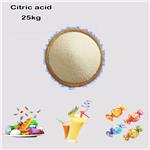
US $0.00-0.00/kg2025-12-09
- CAS:
- 77-92-9
- Min. Order:
- 1kg
- Purity:
- 99%
- Supply Ability:
- 100kg

US $1.00-0.50/kg2025-11-03
- CAS:
- 77-92-9
- Min. Order:
- 1kg
- Purity:
- 99%min
- Supply Ability:
- 200tons



